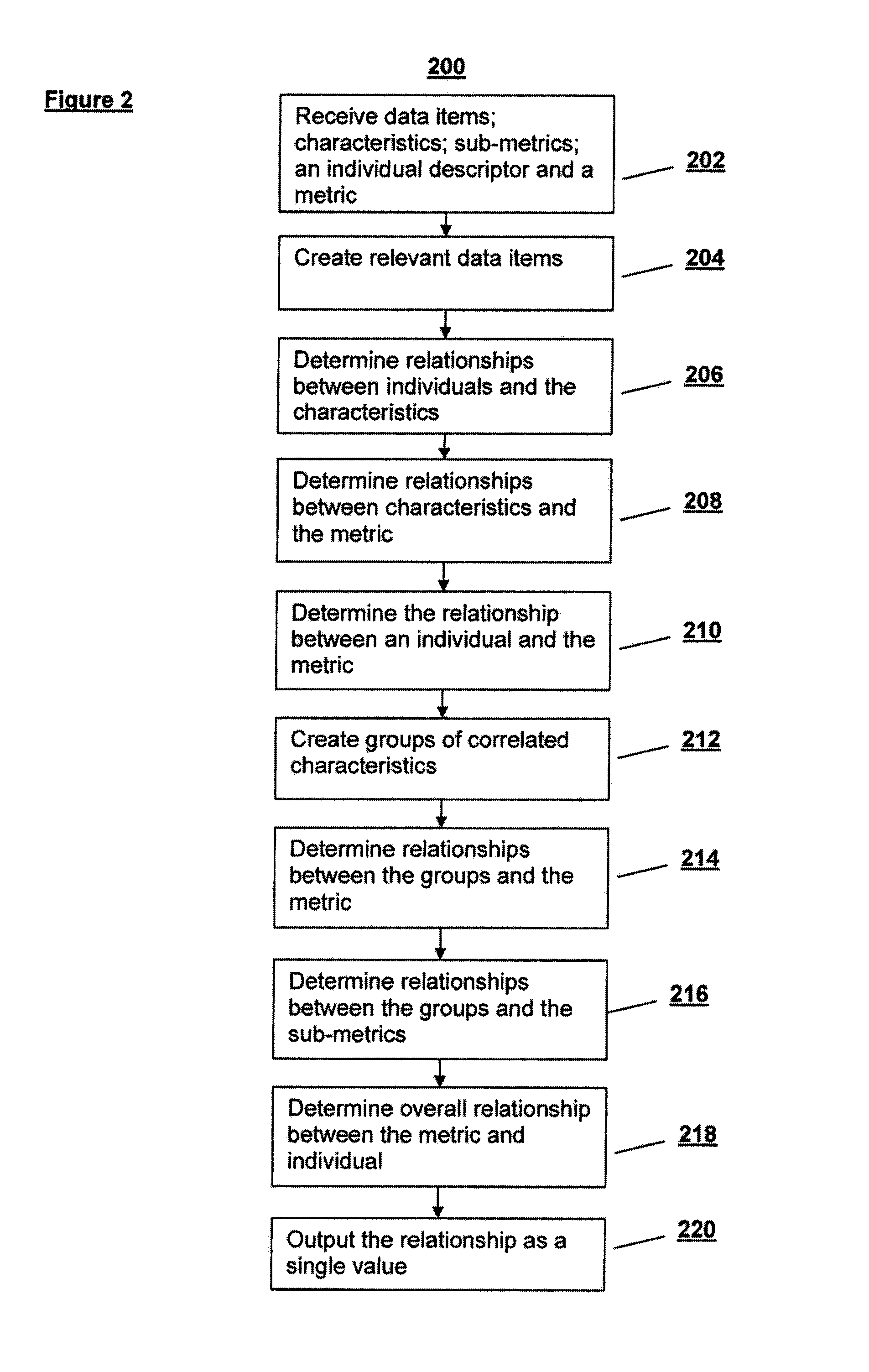While most approaches create basic customer profiles, these profiles do not reflect the myriad similarities between customers or the numerous ways in which customers can be grouped.
For example, most approaches generally provide profiles on either an individual customer or an overly broad customer segment (for example, all women ages 25-34 with a college degree), failing to reflect the various degrees of
granularity with which customers can be grouped.
As a result, customer profiles created by these approaches are generally outdated and inaccurate, and fail to account for the vast amount of potentially rich, but qualitative and subjective, information about the customer that is available to most businesses.
These approaches also have drawbacks.
Typically they use expensive and time-consuming methods such as customer surveys or focus groups.
Due to the nature of the setting, the results may not accurately reflect the attitudes or opinions of the surveyed individuals.
Due to the expense and time involved, only a limited number of individuals may be surveyed.
Likewise, the
purchasing suggestions created by these systems are often inaccurate.
For example, while many customers who purchase item A also purchase item B, that information does not provide any insight into what a specific customer, or group of customers, may be interested in.
Additionally,
customer information is often collected with respect to a single business metric and may never be used to glean insights about other
metrics that may be helpful to the company.
Similarly, businesses with multiple departments frequently gather
customer information for purposes of a department-specific metric, but fail to use that information across other departments or globally within the organization.
Customer information gathered by the marketing department when researching new product markets may never be seen or used by the risk management team to determine whether that customer or market poses undue risk to the business.
Methods for combining this disparate data, (for example, a technique sometimes referred to as “one version of the truth analysis”) do not allow the business to apply the same method to
external data it may be interested in.
Furthermore, these systems are used only to organize the information and are not useful for analyzing it.
Tailoring the message appropriately has become increasingly more difficult with the advent of real-time messaging,
targeted advertising,
social media, viral campaigns, and more.
Nevertheless, tailoring the message appropriately is only becoming more important as doing so often increases conversion rates, click-through rates, sales, and other barometers of an advertising, marketing or PR campaign's success.
As discussed above, systems that use basic profiling techniques result in customer profiles that are generally outdated and inaccurate.
As a result, these systems do not allow these businesses to tailor their message as narrowly as possible for each individual, or group.
However, it is difficult to capture a complete profile of each individual or group of individuals through the use of cookies.
However, this is often difficult to do with the basic profiling techniques described above.
In addition, these basic techniques often cannot be performed in real time, and result in customer profiles that are generally outdated and inaccurate.
Often however, this information is not very detailed.
Many organizations will not (or cannot) sell sensitive or detailed information about each individual, due to privacy concerns and laws.
In business environments where team projects and
collaboration play a significant role, many companies struggle to assemble the most effective teams.
However, factors such as shyness, social dominance, creativity, leadership, the ability to officiate and foster an open and collaborative work environment, among many others, are not formally taken into consideration when assembling a team.
Even when a business recognizes the importance of these and other subjective factors, they are not formally included in the analytical process because such factors are expensive and obtrusive to measure, based upon inconsistent or inaccurate anecdotes, or are measured through historical performance and peer assessment reviews.
These basic systems do not provide real time feedback to team members regarding its performance with respect to critical subjective criteria, such as identifying overly-dominant team members who are drowning out others, identifying “free-riders”, identifying harmful “intra-group cliques”, identifying power-struggles within a team, or identifying detrimental body language, tone-of-voice, or communication habits.
Thus, the basic systems do not enable a business to address these important group dynamic issues until after it is too late.
These associations, however, do not enable a government agency to measure “grey areas” of a person.
For example, two individuals may be nearly identical in their known associations, but one person is often angry, vengeful, and has an explosive temperament.
As a result, the first individual may have a greater correlation with anti-
social behavior and should not be trusted.
One of the most difficult aspects facing businesses today is how to measure the value of its connections and affiliations on
social media platforms.
 Login to View More
Login to View More  Login to View More
Login to View More 


